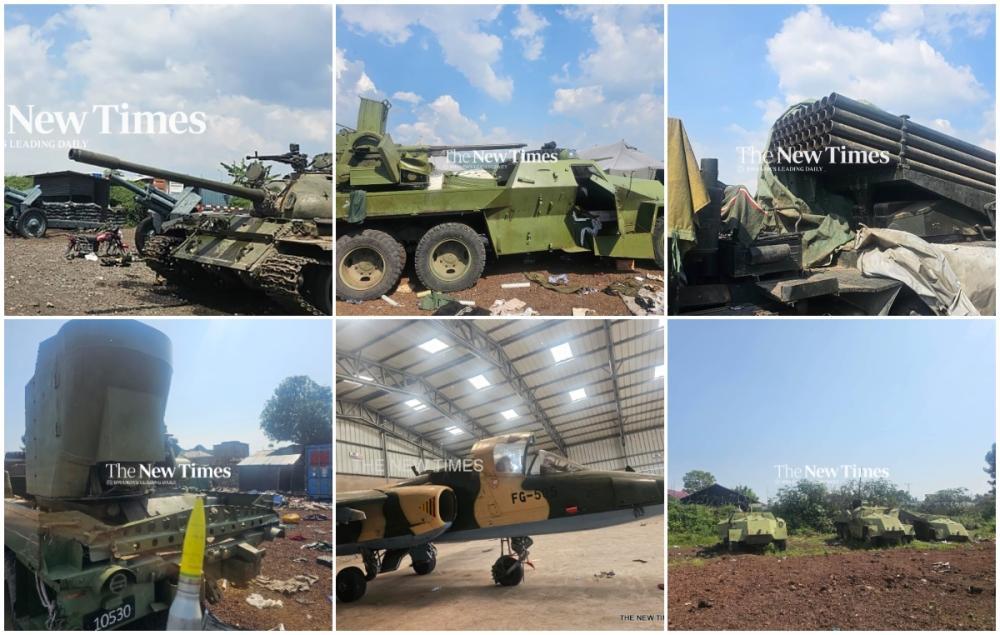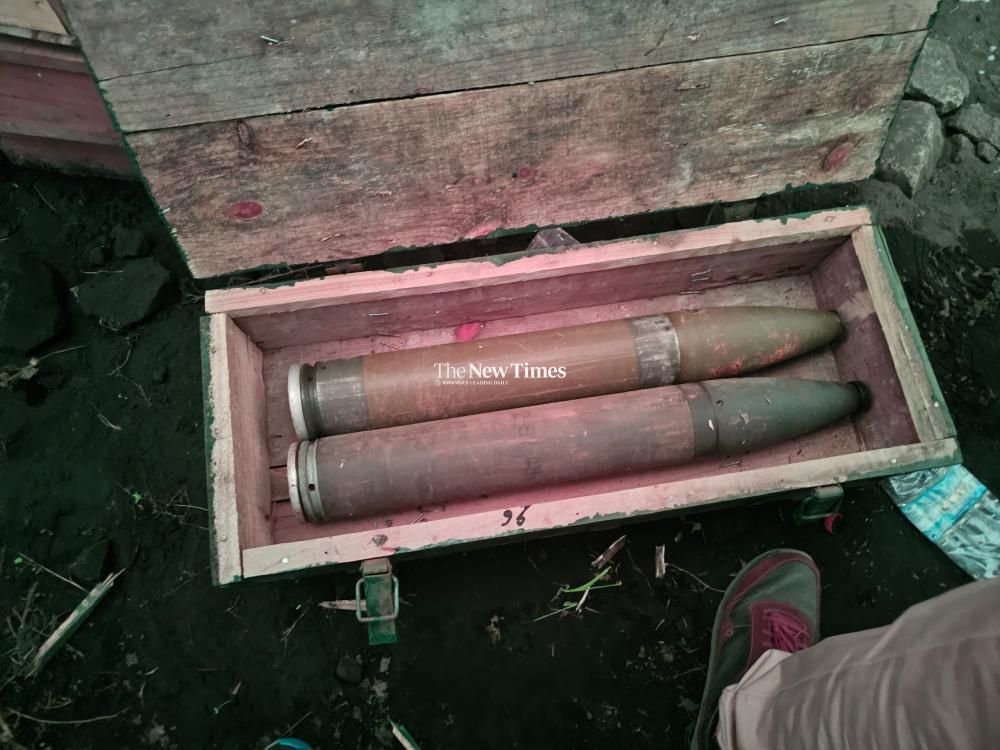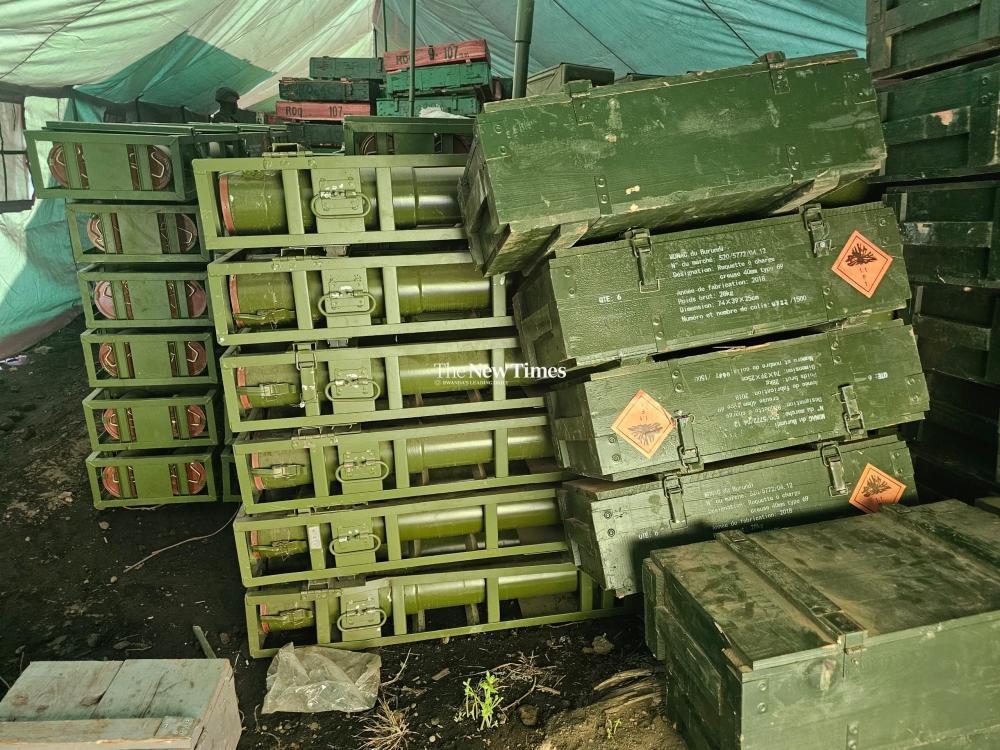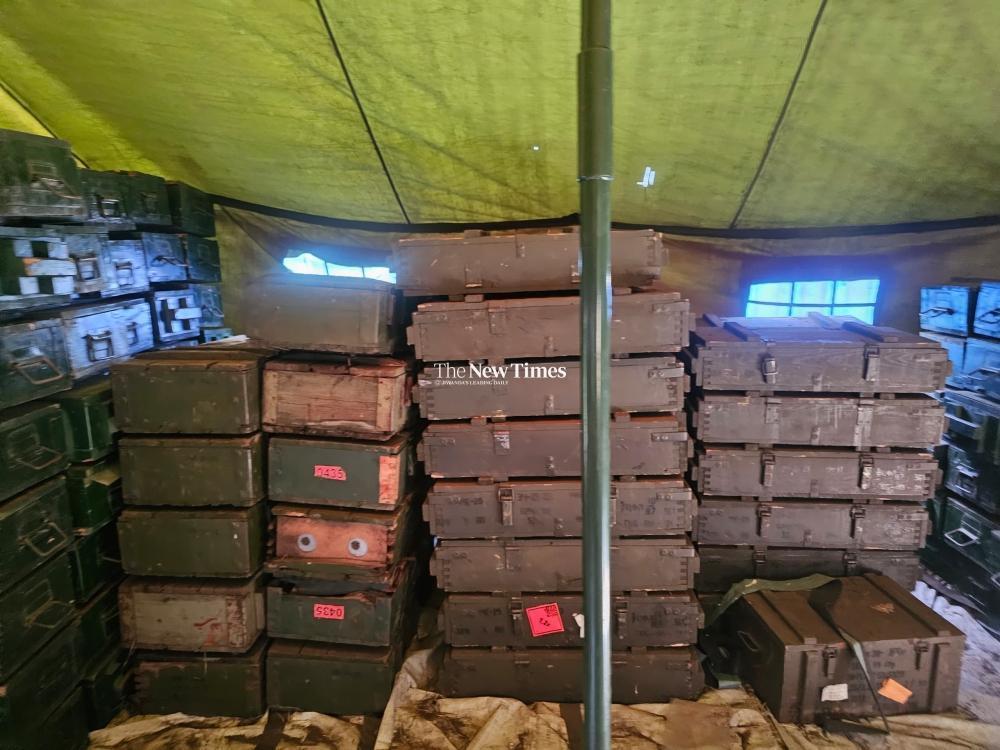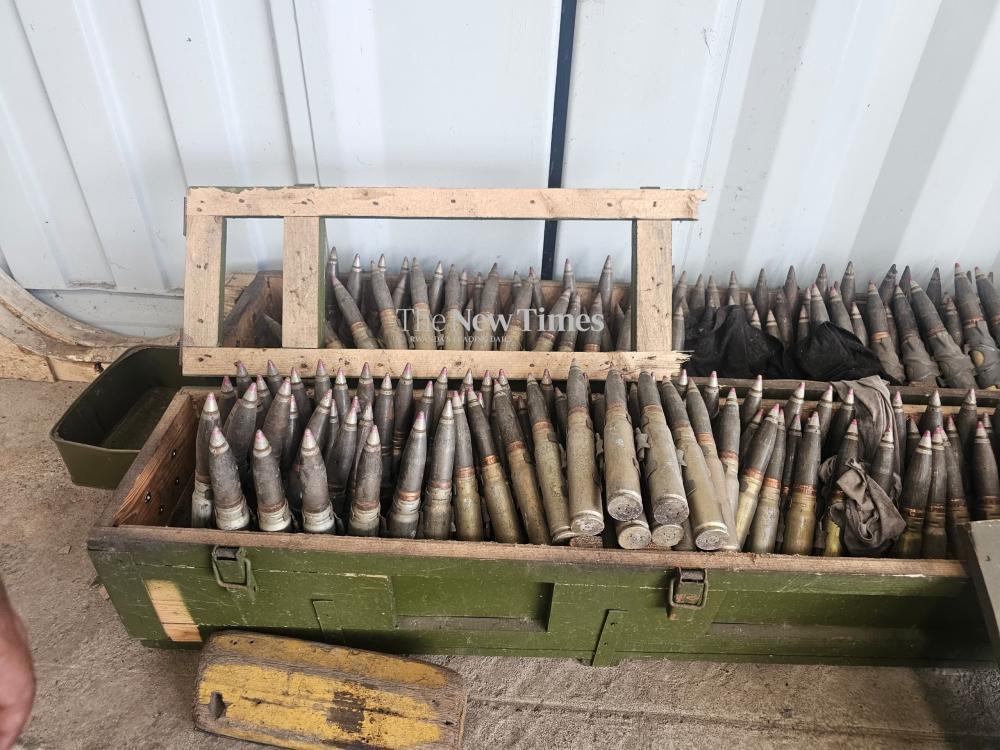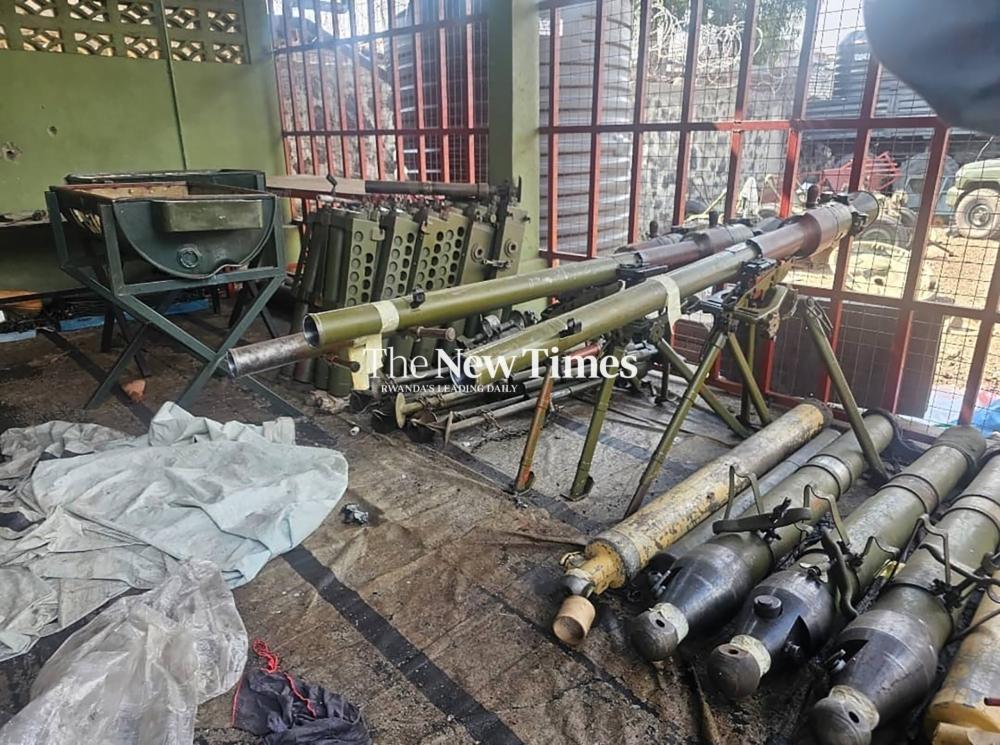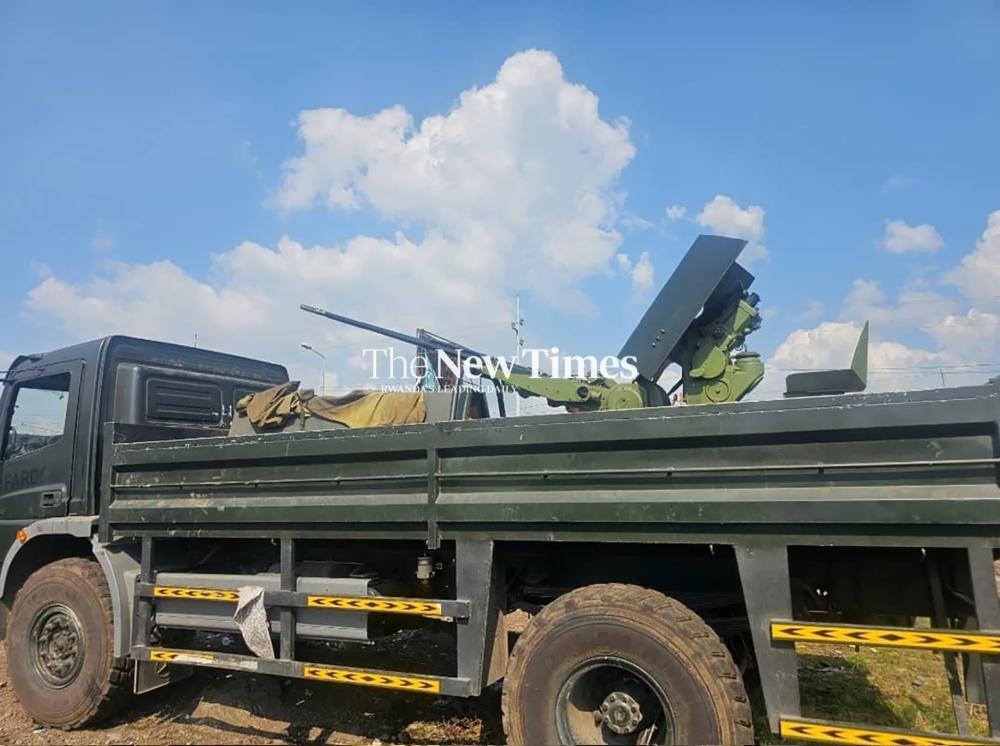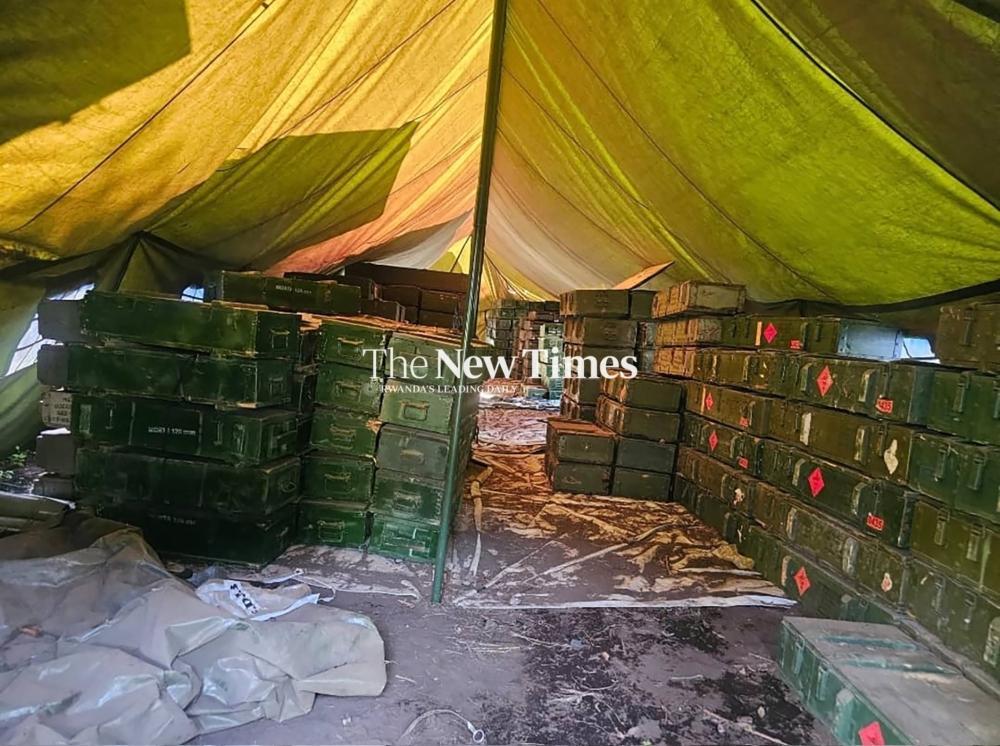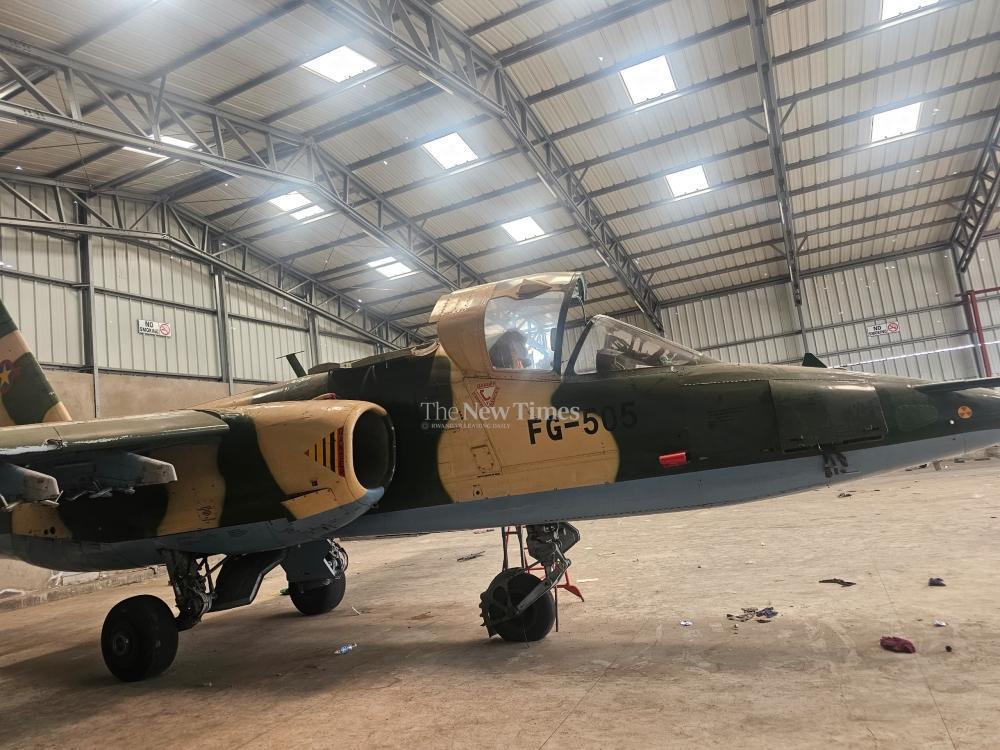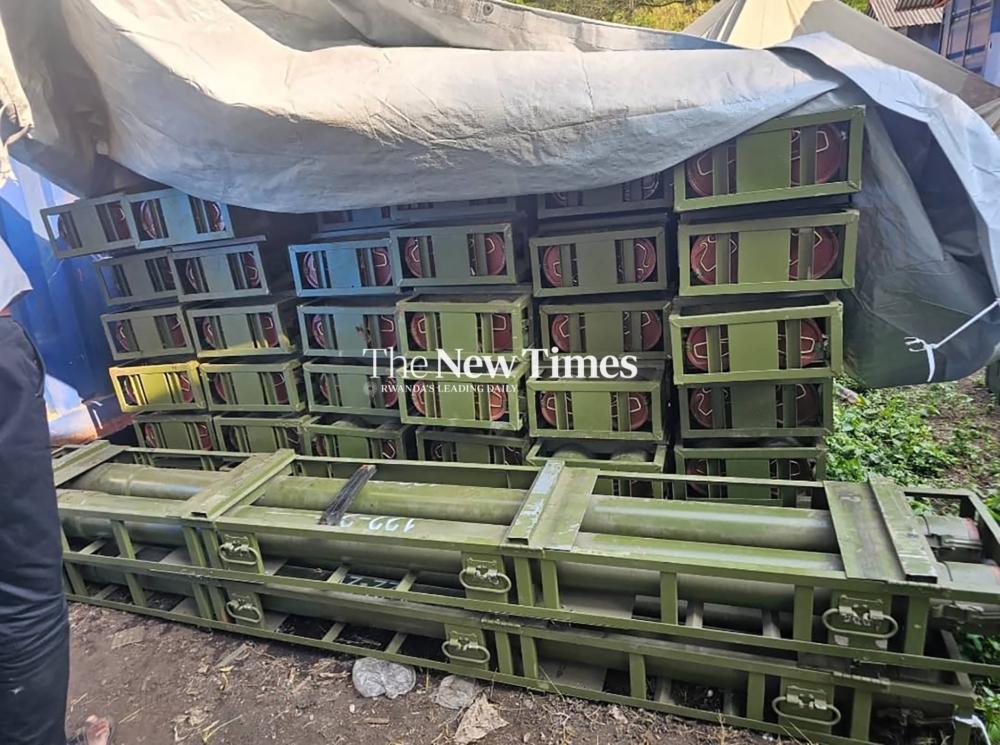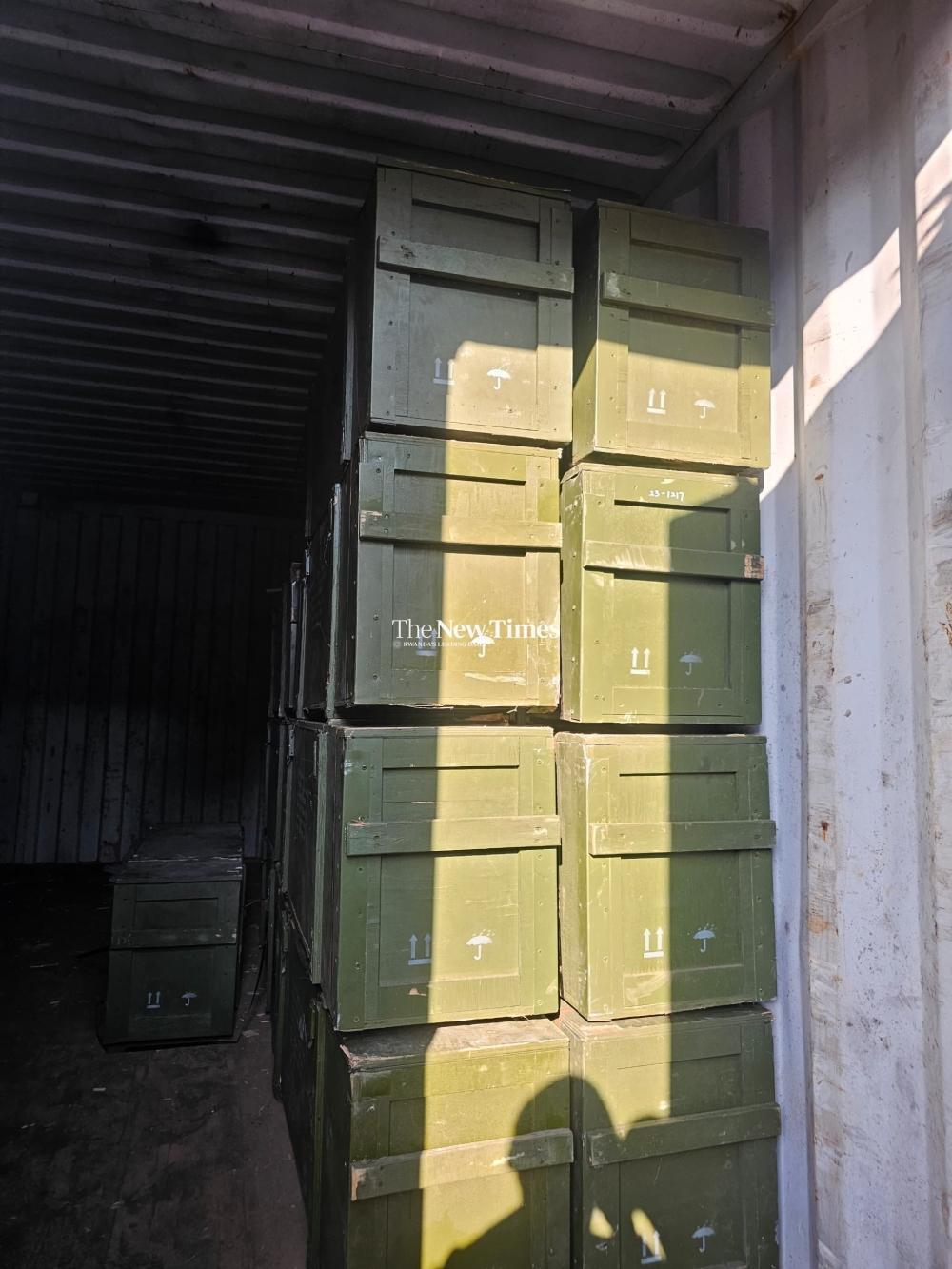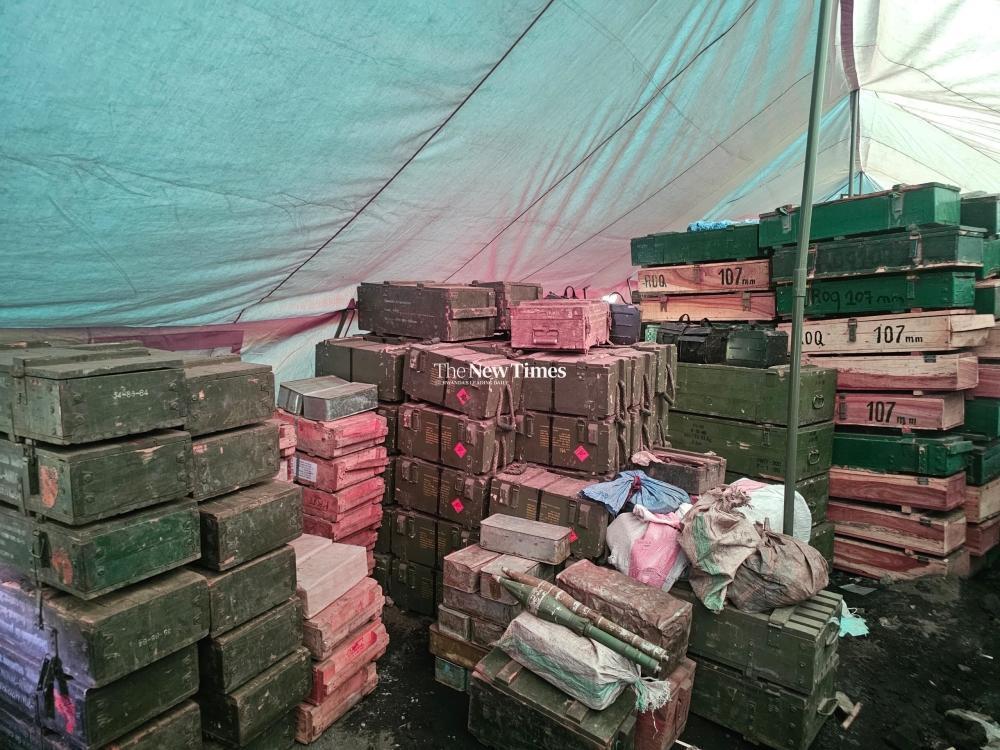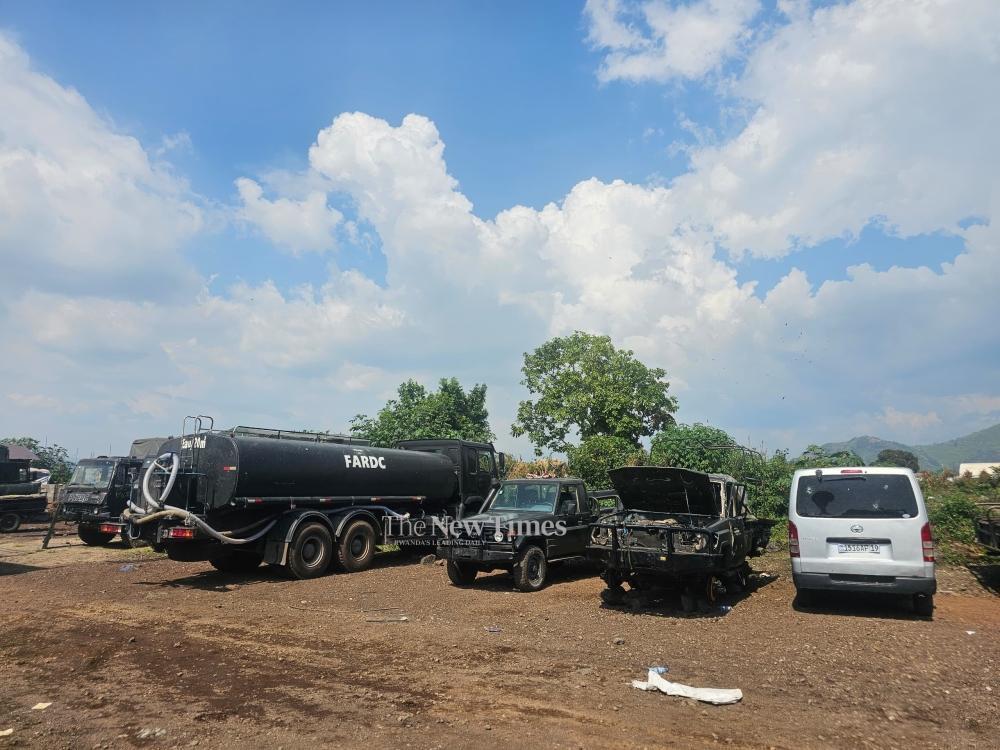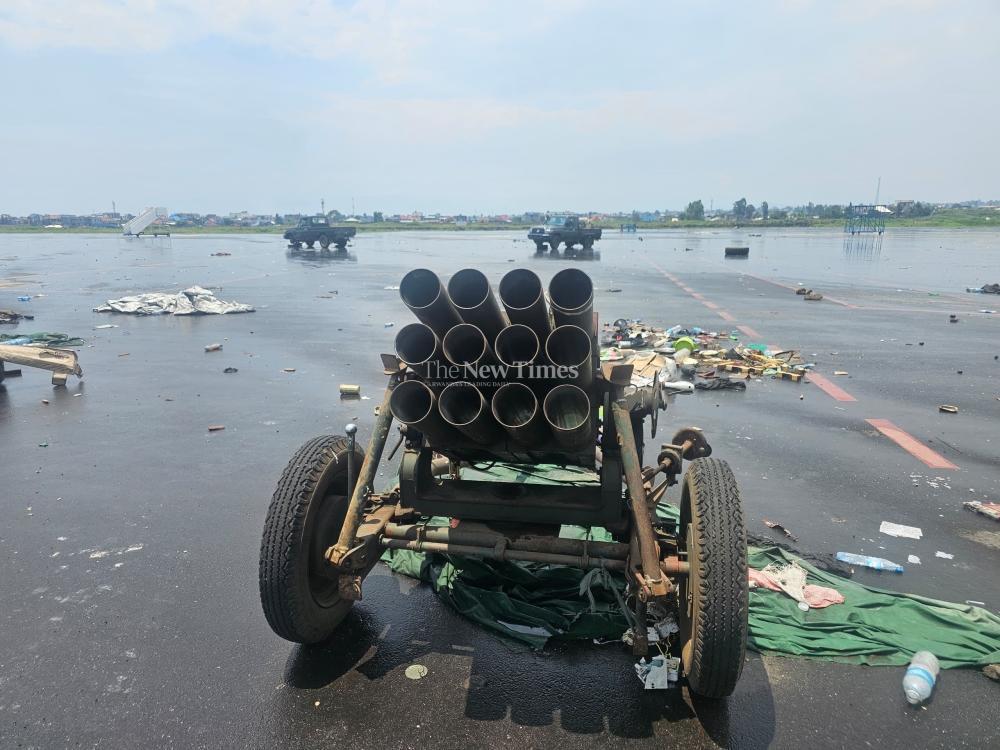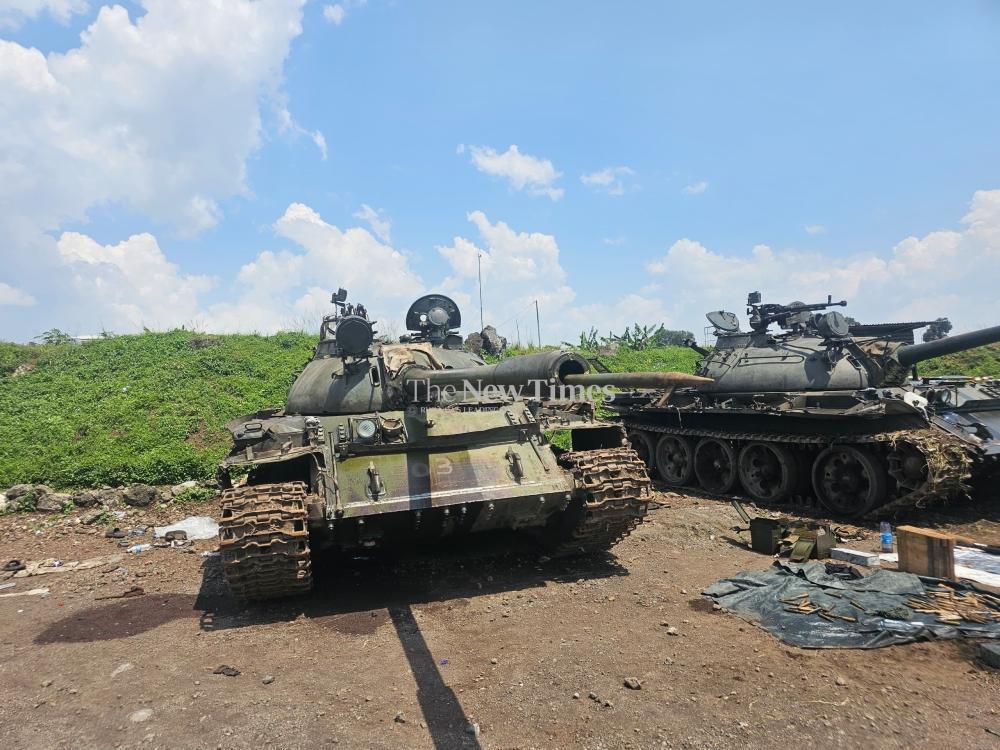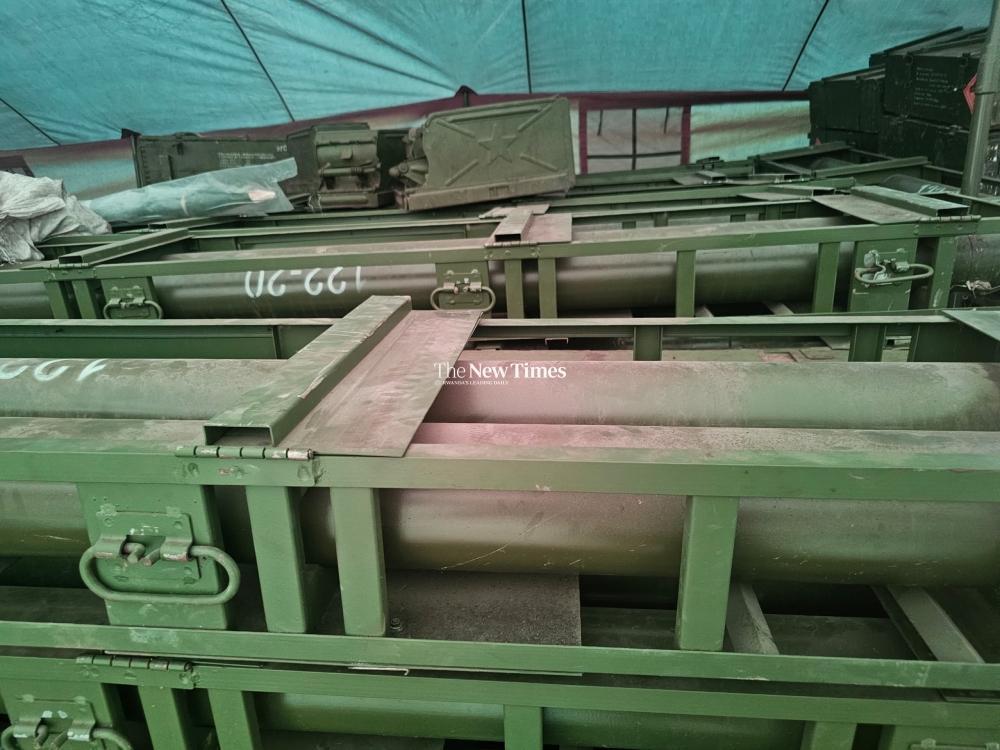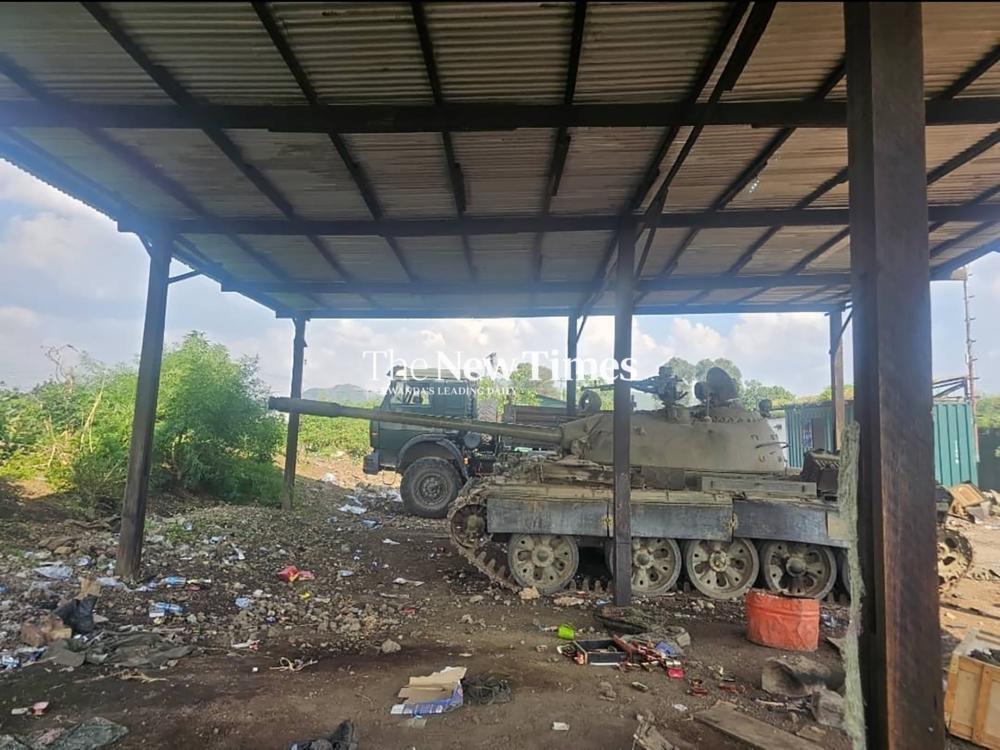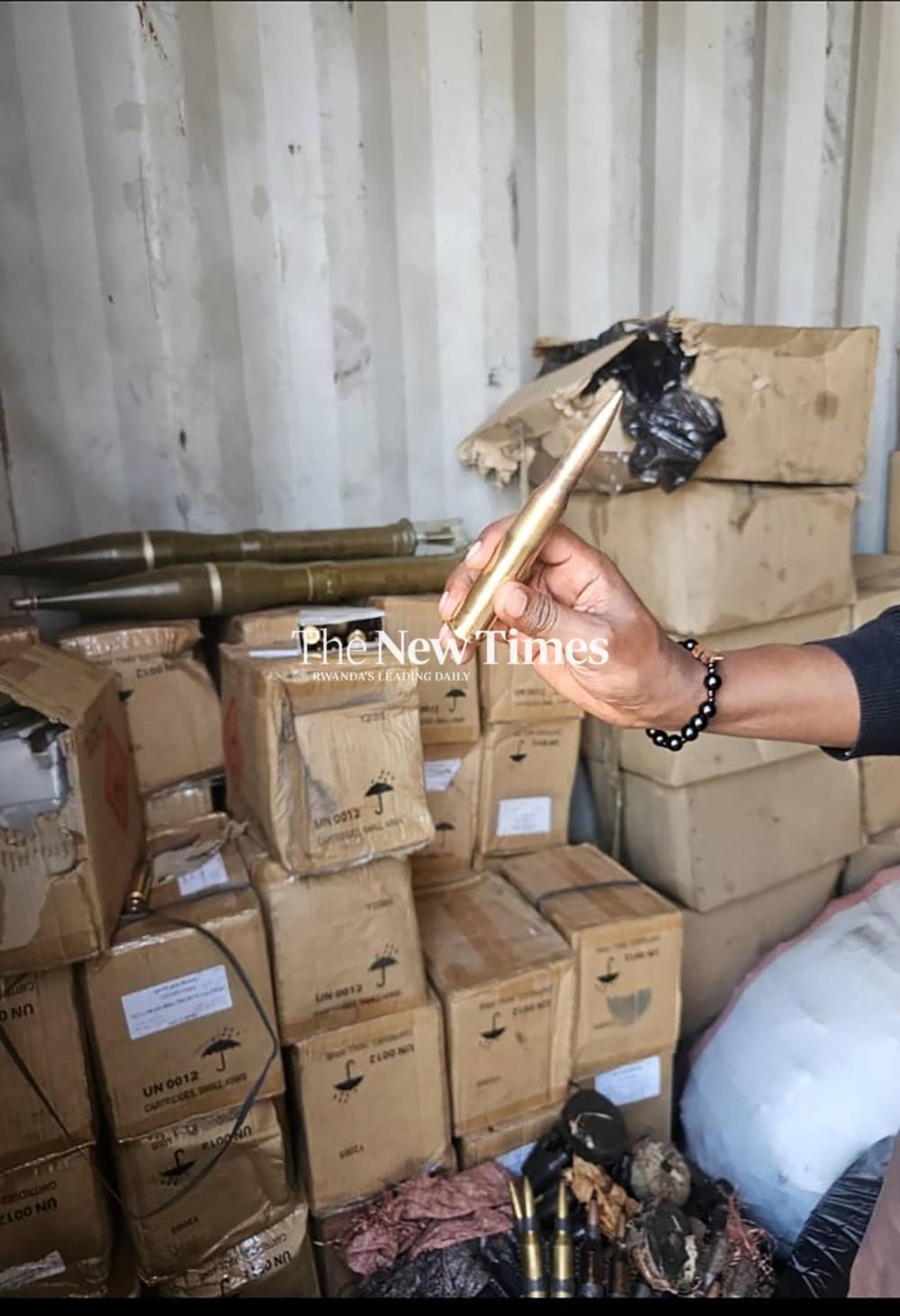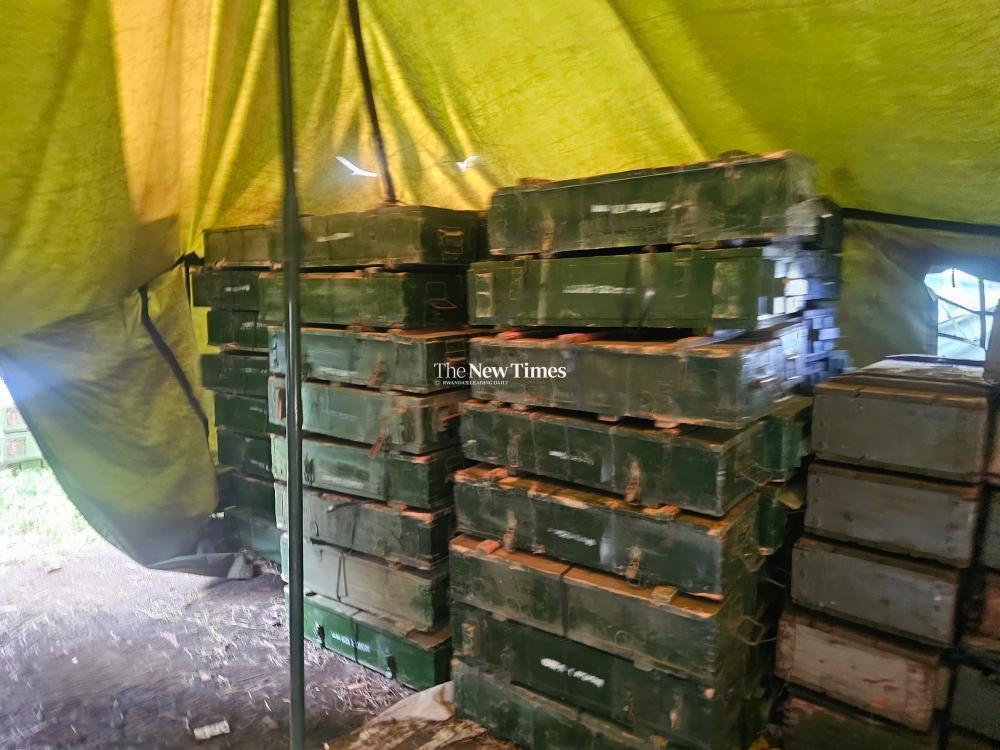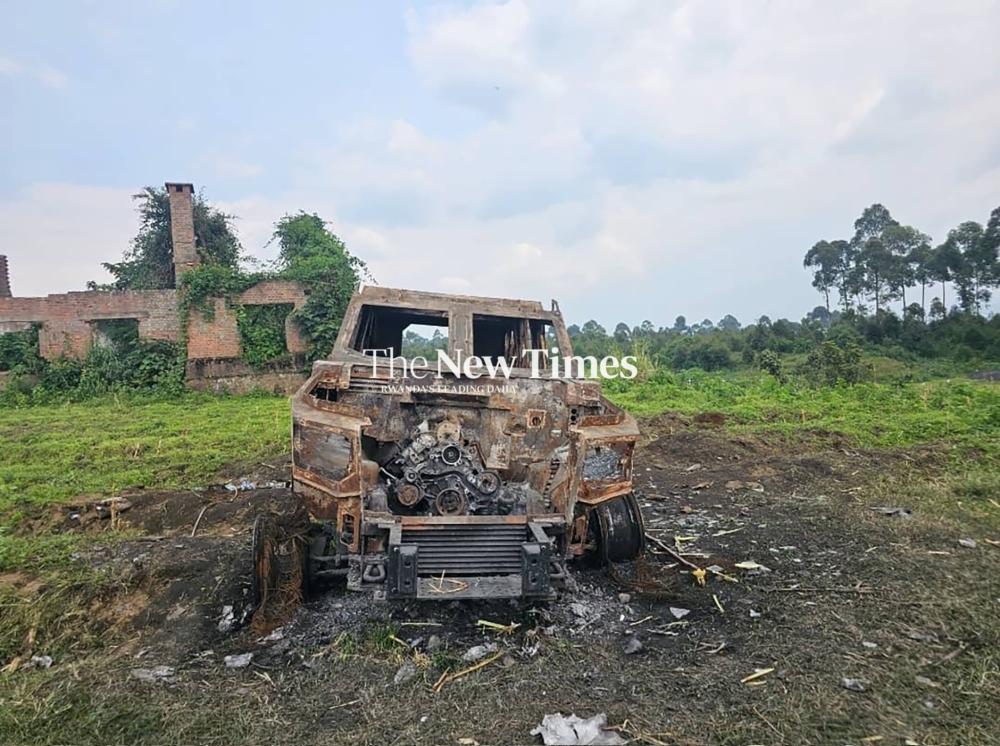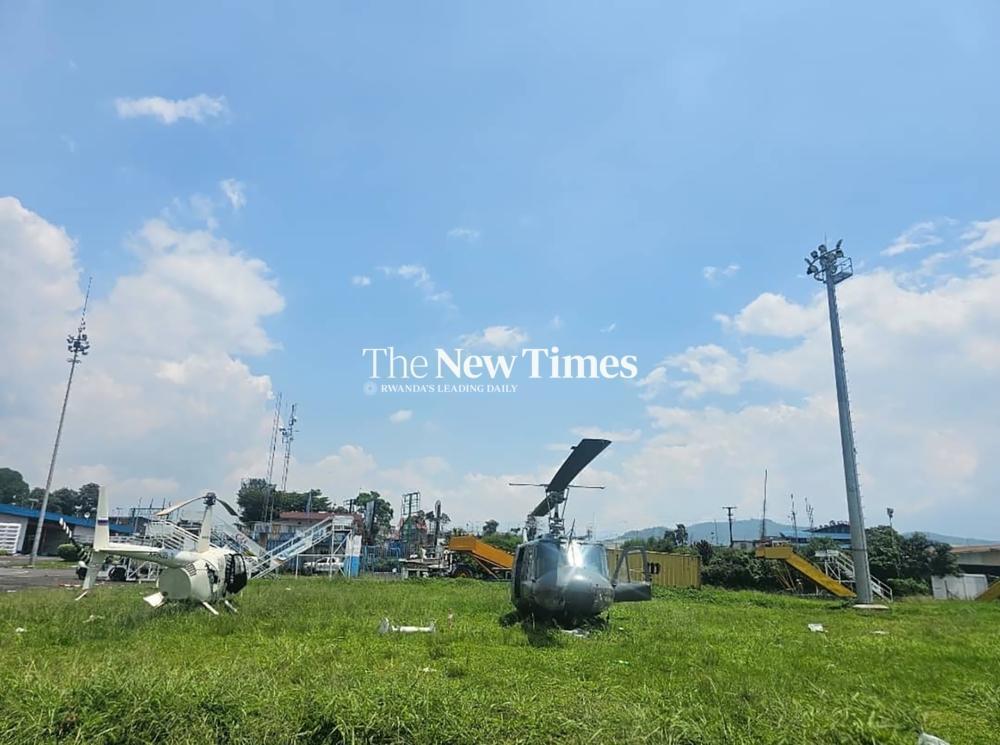Africa-Press – Rwanda. In the last of our five-part ‘Stories from Goma’ series, The New Times takes a closer look at the big picture, with a dive into what some have described as stark evidence of a mindboggling plan by DR Congo to invade Rwanda.
Goma, which fell to M23 rebels following the seizure of the city’s airport on January 28, had been the centre of gravity in President Félix Antoine Tshisekedi’s response to the re-emergence of M23 rebellion in 2021.
As such, the city of roughly 2 million people became the hub of military operations against the rebels, who had sneaked back from Uganda and picked up arms again.
They blamed Kinshasa for failing to honour its own commitments that had helped end an earlier M23 conflict in 2013 – itself the result of unfulfilled promises from a March 2009 deal from which the group would derive its name, March 23 Movement, or M23.
In the months before M23’s march on Goma, there had been talk that Tshisekedi and his allies had turned the lakeside city into a heavily militarized zone with a significant military build-up – some say the government coalition had amassed around 60,000 fighters in and around Goma alone – and poured large amounts of heavy weapons into it.
Goma, a twin metropolis of Rwanda’s border city of Rubavu, effectively became the point of convergence for all pro-Tshisekedi forces, a place from where they ran the central joint command centre, shared intelligence, and coordinated their combat operations.
The alliance included the Congolese army (FARDC), Burundian government forces, SADC troops, the notorious Wazalendo militias, European mercenary fighters, UN peacekeepers under MONUSCO, Force Intervention Brigade (FIB – a MONUSCO wing with an offensive mandate), and the genocidal FDLR, a UN-sanctioned terrorist group with roots in the 1994 Genocide against the Tutsi in Rwanda.
DR Congo’s move to amass tens of thousands of combat-ready troops and militias, and stockpiles of heavy military equipment near the border with Rwanda raised eyebrows in Kigali, which rejected claims it was behind M23.
President Paul Kagame’s government accused Kinshasa of escalating tensions through incendiary rhetoric, repeated incidents of cross-border shelling, and violations of Rwanda’s airspace by DR Congo’s warplanes.
Matters were not helped by Tshisekedi’s repeated public declarations he was ready to bring about ‘regime change’ in Rwanda, at one time even stating he would achieve this objective without setting foot on Rwandan soil.
In response, Rwanda said it had put in place defensive measures to counter any possible attack.
Indeed, Rwanda would later activate its defensive technology to intercept a barrage of shells fired from the FARDC coalition camp across the border in Goma after M23 entered the city, eventually taking it late last month after nearly two days of intense fighting around the airport.
Abandoned weapon stockpiles
As FARDC, along with Burundian troops and genocidal FDLR and Wazalendo militias, fled in disarray, and the other coalition partners retreated to their bases, they abandoned stockpiles of modern weapons, ammunition and other military equipment.
This is a scenario that has played out repeatedly over the course of this conflict – much to the delight of M23.
But few would have expected to find out the kind of weaponry Tshisekedi had assembled in Goma.
Of abandoned armories and weapons lying in battlefields…
When The New Times visited a major lakeside arsenal and some of the battlefields that saw fierce fighting like Goma airport and Mubambiro barracks, we spent hours seeing large quantities of weapons.
Most of them were still safely tucked away in their shipping containers, complete with labels and volume numbers.
At both Goma airport and Mubambiro, most of the seized artillery weapons, battle tanks, armored personnel careers, fighter aircraft lay in disarray, generally undamaged.
While the main armory near Lake Kivu held most weapons, there were several smaller armories at Goma airport, most of them still intact.
At the airport, we saw one mobile armory at the airport that had been burnt by fleeing Burundian forces, although they had left many others untouched, which suggests time was not on their side as M23 swept into the city.
Most of the ammunitions were stored in large metallic or wooden ammo boxes, or corrugated cardboard boxes, largely carefully arranged in columns towering over my head.
There were large amounts of ammunition of different calibres and types, including unexploded grenades (unexploded ordnance), brand new fatigues, flak jackets, military water bottles, and helmets abandoned on these war-scarred battlefields.
With our visit coming nearly two weeks after the rebels had taken Goma, we were told a significant amount of the seized weapons and other equipment had been removed and taken to the battlefields.
Yet, there was still plenty to see.
BM-21 Grad multiple rocket launchers
At Goma airport, we saw a BM-21 Grad multiple rocket launcher truck with 40 barrels. We learnt that four of them were seized at the airport. The Grad can fire between 20-40km, meaning that, from this location, it can be used to strike a target area in Nyabihu District.
Because Grads are not precision weapons, each rocket can devastate a large area, thanks to numerous explosions and fragmentation effects, all in a burst, giving the victims no chance to react. The Soviet-made weapon can launch 40 rockets in just 20 seconds.
“The Grad is one of those weapons that release a salvo of artillery firepower, it’s a very dangerous weapon,” a retired field artillery officer told The New Times this week.
Our research showed that a M-21 Grad multiple rocket launcher system has a unit cost of $2.3 million before factoring in transport costs.
122mm RM-70 21 BM launchers
Also seized at the airport include 122mm RM-70 21 BM weapons with capacity to fire over 20km away. Like the Glad, the RM-70 can fire 40 rockets in a volley, using more than 250kg of explosives. The Czechoslovakian-made RM-70, which can fire a variety of warheads, has 40 barrels. M23 seized more than 2200 of these rockets in Goma alone. We looked up on the internet how much each rocket costs and one can go up to $2,000 minus transport and other attendant costs.
122mm D-30 howitzers
The 122m D-30 howitzer is a wheeled, towed artillery piece with the ability of the ordnance to traverse 360 degrees. At least two howitzers were captured at the airport. They were still there when we visited last week. A howitzer has a shooting range of 15.4km using standard HE-Frag shells, but it can reach 21.9km with rocket-assisted projectile ammunition.
107 Katyusha multiple rocket launchers
Also seized at the airport were “about four 107mm Katyusha multiple rocket launchers,” according to a highly placed source in the M23 units that captured the airport.
First used by the Soviet Union in the World War II, Katyusha (Russian word for ‘little katy’) is a multiple rocket launcher with a high explosive warhead used to deliver explosives to a target area. With an effective shooting range of 11km, it can be mounted on almost any chassis. Its accuracy is within a space spanning several football pitches put together.
However, some modern Katyusha rocket variants have an effective shooting range of between 40-80km. Nearly 1000 rockets of Katyushas were seized at the lakeside armory in Goma. Israel struggled to intercept Katyusha rockets from Hezbollah before it rolled out its defensive Iron Dome technology in 2011.
Although Katyusha rockets are known for being relatively affordable compared to more advanced missile systems, a single 107mm Katyusha rocket still costs about $300 per round, according to online information.
37mm anti-aircraft guns, 3000 shells…
The rebels also seized several 37mm anti-aircraft guns, along with at least 3000 shells in Goma alone. This gun can be used in a variety of configurations, including self-propelled vehicles, trailers, or fixed installations. It has a rate of fire ranging between 150 and 180 rounds per minute, with an effective slant range of 2,499m. It can hit targets 7km away.
It was not immediately clear how much this anti-aircraft weapon costs.
20mm anti-aircraft, 300 shells…
Lying among debris from fighting on the runway at the airport were two 20mm self-propelled anti-aircraft cannons mounted on Anti-Personnel Carriers, or APCs. This artillery piece can move across the battlefield under its own power, rapidly firing in different positions without needing external towing.
At least two of these were captured at the airport, along with more than 300 of their shells. Primarily effective against low-flying aircraft at short to medium range up to 7km, the 20mm self-propelled anti-aircraft cannon costs around several million dollars per unit depending on the specific system, according to information we found online.
Guided 120mm mortar guns, 2000 mortar rounds…
With a shooting range of up to 8km (although some variants can reach 13km), the guided 120mm mortar is a high-precision munition ideal for infantry operations. With a system featuring a high-explosive and a pyrotechnic control capability, it supports friendly forces with precision-strike capabilities suitable for targeting enemy forces and equipment. This type of mortar, essentially a guided projectile thanks to in-built additional guidance systems like GPS, can assault multiple targets with single positioning.
More than 2000 mortar rounds (shells) were seized at the lakeside weapon arsenal.
Tanks, plus 30mm anti-aircraft and 20mm anti-aircraft weapons…
The rebels also seized a variety of other artillery support weapons, including 30mm anti-aircraft weapons (along with at least 2000 rockets), 20mm anti-aircraft (with more than 2000 shells), each with capabilities to reach a target seven kilometres away.
At the airport, the M23 also captured at least four tanks, each mounted with 100m anti-tank and field gun, plus at least 300 shells. Each tank could go for a few hundred thousand dollars depending on its condition, while regular artillery shells cost around $2,000 each, according to information on the internet.
Weapon-loaded containers, thousands of shells, millions of cartridges…
Meanwhile, M23 also captured large quantities of integral weapons, including 82mm mortars (along with more than 400 shells); 73mm SPG-9 recoilless anti-tank rifles (400); and 60mm mortar launchers, along with more than 400 shells.
Others include 12.7mm anti-aircraft machine guns, along with over a million cartridges. A machine gun was listed around $2,250 per unit more than ten years ago. There were also other types of machine guns, along with tens of thousands of cartridges.
At the armory we also saw RPGs, or rocket-propelled grenades, a shoulder-fired weapon that launches rockets with explosive warheads. An RPG can be used to destroy tanks, vehicles, and helicopters.
Also captured from FARDC and their allies included long range sniper weapons for targeted assassinations, along with more than 300,000 cartridges, according to an M23 officer who took us on a tour of the armory, which had nearly 40 containers of seized weapons. They also captured boxes containing more than 300 million cartridges of SMGs, the lightweight, automatic weapons with short barrels designed for close-range combat.
Weapons with Burundi labels, fighter planes…
At the lakeside weaponry stockpile, we spent more than an hour moving from weapon-loaded container to another, each laden with piles of unsealed boxes of ammunition, including RPG rockets. Some RPG rocket cases bore Burundi labels.
At the airport, the FARDC-led coalition also abandoned several fighter planes, including a Russian made Suhkoi-25, a major weapon in President Tshisekedi’s arsenal in his war against M23, complete with its components, including pods, 20,000 C-8 rockets and Ofab bombs.
The rebels also found three military helicopters at the airport.
Suicide drones, reconnaissance aerial vehicles…
Elsewhere, in Mubambiro, The New Times saw several drones that were captured, including Kamikaze drones, sometimes referred to as suicide drones. Also known as loitering drones, they can carry a variety of explosive payloads with the ability to hover over a target until it is instructed to strike.
Unlike other drones, Kamikaze are used once as they destroy themselves while attacking their target. The cost of this aerial weapon with an in-built warhead varies considerably depending on the type, ranging from $1000 to $35,000. At Mubambiro, this reporter saw scores of these deadly weapons, along with their accessories, including batteries.
We also saw several reconnaissance unmanned aerial vehicles, equipped with cameras and sensors, Cobra II APCs, military trucks, and damaged artillery and light weapons.
A single Cobra II unit could cost up to $880,000 but some can go for around $180,000.
Here, we also saw burnt-out tanks, ammunition and other equipment that belonged to SADC contingents. An M23 Major that led the assault on Mubambiro took us to a spot where South African SADC troops abandoned an assortment of weapons on the day this key installation near Sake fell into the hands of the rebels.
Weapons abandoned by South African troops
Some of the weapons abandoned by the South Africans include RPGs, SPG 9s, anti-tank grenades, LG5 grenades, MG chains, loaded magazines, among others.
The commander told us that, here, the South African FIB/MONUSCO contingent fought alongside the FARDC special forces (Hiboux or Owls) and SADC forces, the former having previously moved to this base from Beni after the South African SADC troops arrived in Mubambiro.
“We believe they requested to be transferred to Mubambiro because they wanted to be in a position where they could offer logistical support to compatriot members of SANDF (South African National Defence Forces) who were coming here as part of the combat SADC Mission, and they did do just that,” the M23 officer told us.
South African officials have admitted the country’s FIB/MONUSCO contingent was providing support to their SADC combat mission.
At Mubambiro, we learnt that South African troops were the last line of resistance to the M23 offensive after DR Congo’s Hiboux special forces and European mercenaries fled from the battle on January 24. We were told more than a dozen South African troops died here on that day, and The New Times saw a copy of a letter from the head of the South African SADC contingent at the base to the M23 commander here requesting for permission to recover the remains of their fallen compatriots.
Cutting through the enemy lines
As was the case at Goma airport, the battle for Mubambiro lasted a day and a half, with M23 making the most of their strategic positions at nearby hills, including Ngingwe, Rukara, Muremire, Kiluku and Kwa-Madimba, to fend off reinforcements from Goma and overwhelm the base.
An M23 unit that cut through the enemy lines to take Bulengo peninsula before attacking the barracks from behind would prove to be one of the most decisive factors during this battle.
The buildings at this military compound bear fresh wounds of war, some with significant damage from shelling apparently from different directions.
At least five tanks, including one belonging to South Africa’s offensive FIB/MONUSCO contingent, were destroyed on the day M23 captured the facility.
When we visited Mubambiro, on February 11, the SADC troops were confined to their respective encampments at the base, white flags – a symbol of surrender or ceasefire – flying over their bases.
‘No chance’
As with the situation at Goma airport, the SADC forces here still had weapons with them inside their camps, but an M23 source we spoke to ruled out the possibility of allowing them to leave with their weapons when their countries eventually agree to withdraw them.
“No chance,” said the battle-hardened-commander whose units successfully held on to their positions in a strategic range of highlands northwest of low-lying Sake and Mubambiro for more than a year before their decisive offensive last month.
Elsewhere, The New Times also found artillery weapons – some burnt-out, others seemingly in good shape – captured by M23 in several other localities, including at a former mercenary base at Trois Antennes in Kibati and Kirimanyoka, both in Nyiragongo territory. We also learnt that the rebels also seized several other weapons from at least three Goma hotels where European mercenaries had camped.
‘Those weapons were not for attacking a small rebel group’
The scale of the weaponry that had been amassed in and around Goma has left observers bewildered, many citing this as irrefutable evidence of Tshisekedi’s intent to deliver on his brazen threats against Rwanda.
It has been estimated that Tshisekedi’s government had invested billions of US dollars in military hardware and technology in its war against M23, some estimates putting the amount at $4 billion.
Asked what he made of the military arsenal the Congolese government had assembled in Goma, along with the contiguous deployment of its coalition forces, including the genocidal FDLR near the border with Rwanda, a retired Colonel said, “Those weapons were not for attacking a small rebel group like M23, they had been assembled to invade Rwanda.”
“It is mindboggling what was going on over there, right on our border,” he said. “It was a matter of time, M23 might have as well thwarted a major strike on Rwanda.”
Source: The New Times
For More News And Analysis About Rwanda Follow Africa-Press

